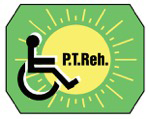


|
Current issue
Archive
Manuscripts accepted
About the journal
Editorial board
Reviewers
Abstracting and indexing
Contact
Instructions for authors
Publication charge
Ethical standards and procedures
Editorial System
Submit your Manuscript
|
3/2020
vol. 34 abstract:
Original paper
Changes in balance and fall risk in female members of the Third Age University aged 60 and older
Grzegorz Bednarczuk
1
1.
Faculty of Rehabilitation, Józef Piłsudski University of Physical Education in Warsaw, Poland
Advances in Rehabilitation, 2020, 34(3), 15–21
Online publish date: 2020/09/16
View full text
Get citation
ENW EndNote
BIB JabRef, Mendeley
RIS Papers, Reference Manager, RefWorks, Zotero
AMA
APA
Chicago
Harvard
MLA
Vancouver
Introduction
Ageing processes are accompanied by degenerative changes within all functional and anatomical systems. These changes affect postural stability. This study sought to compare balance and fall risk indexes taking into account the age of the participants. Material and methods The study included female members (n=59) of the University of the Third Age (U3A) set up at the University of Physical Education in Warsaw. The participants were divided into five age groups: 1 (60-64 years), 2 (65-69), 3 (70-74), 4 (75-79) and 5 (>80). Biodex Balance System was applied in the study. The overall stability index (OSI), the anteroposterior stability index (APSI), the mediolateral stability index (MLSI) and the fall risk test were used in the analysis. The participants performed tests that involved standing on both feet with eyes open and closed on a stable surface as well as standing with eyes open on an unstable surface. ANOVA was used to assess balance with regard to age. U Mann-Whitney test was employed to compare groups in terms of balance and the fall risk (p<0.05). Results The oldest group demonstrated the worst balance performance with eyes open: OSI – 0.70±0.47; APSI – 0.49±0.30; MLSI – 0.37±0.43. The best values of balance performance were manifested by the subjects aged 65-69: OSI – 0.36±0.13; APSI – 0.25±0.08; MLSI – 0.18±0.11. Compared to eyes-open conditions, the tests performed with eyes closed revealed the smallest differences between the groups in OSI. The lowest fall risk was noted in groups 1 and 2. The highest fall risk index was found in group 4. Conclusions The findings of the study show that older adults depend on their vision when keeping balance. Physical activity exerts a positive influence on their balance and reduces the risk of falling. However, balance performance deteriorates and the fall risk increases with ageing. keywords:
falls, balance, postural stability |
    |